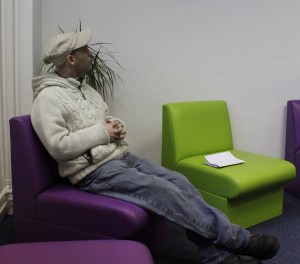About Homelessness
Homelessness takes many forms. Rough sleeping can be shockingly visible. But many people’s experiences of homelessness are out of view in derelict buildings, squats or sofa surfing. Then there are those living in hostels, night shelters or temporary accommodation leased by their local authority.

The Government provides official statistics around the number of households who apply to their local authority each quarter and are found to be homeless. It also provide a sum of the street counts that have taken place, giving some indication of trends in rough sleeping. This page will provide an overview of some of the definitions of homelessness, and some of sources of statistical information available about this subject. To read more about groups at risk of homelessness visit our Who is homeless? section.
STATUTORY HOMELESSNESS
‘Statutory homelessness’, is where local authorities have defined a household as homeless within the terms of the homelessness legislation. Where they are found to be in priority need and not intentionally homeless then local authorities will have a duty to offer accommodation. This can include families with dependent children, pregnant women and adults who are assessed as vulnerable.
The legal provisions are contained in the 1996 Housing Act, the Homelessness Act 2002, and the Homelessness (Priority Need for Accommodation) (England) Order 2002. Statutory homelessness statistics for England are collated and published each quarter by the government department Communities and Local Government (CLG). The statistics provide details of the numbers of households:
- local authorities decided are homeless and in priority need
- homeless but not in priority need
- local authorities decided are intentionally homeless
- in temporary accommodation (bed and breakfast, women’s refuges, private sector leased or local authority/housing association).
NON-STATUTORY HOMELESSNESS
‘Non-statutory’ (sometimes inaccurately called ‘single’) homelessness is either where households or individuals are not found to be eligible, do not fall within the definition of priority need or who are deemed to be ‘intentionally’ homeless or have not gone through the legal application for housing.
Individuals and families who fall outside of the definition of statutory homelessness include:
- single people and couples who have no dependent children and do not fall into the statutory definition of vulnerable
- families with older children who are no longer dependent.
Many people living on the street, in hostels and other forms of temporary accommodation will fall into the category of non-statutory homeless. Consequently, many agencies in the voluntary sector tend to support those who are non statutory or single homeless. However, the division between the two groups is becoming increasingly blurred.
Homeless Link publishes a Survey of Needs and Provision (SNAP) to provide a picture of the extent and nature of services for single homeless people and couples without dependent children. This includes a measure of the numbers of homeless people in hostels and other types of supported housing.
ROUGH SLEEPING
Rough sleeping is the most visible, sharp end of homelessness. Rough sleepers may be seen in shop or office doorways, in bus shelters or other public places. But often rough sleepers are out of sight, bedding down at different times of day or night, moving from place to place. People who sleep rough may fall outside of the definitions of statutory homelessness and move in and out of temporary accommodation.
Homeless link publishes links and information on rough sleeping on its Rough Sleeping Portal.
MEASURING ROUGH SLEEPING
Statistics on rough sleeping are gathered through periodic street counts in a limited number of local authority areas. Street counts count people actually seen ‘bedded down’ by local homelessness outreach teams during a short period at night.
In London, the charity Broadway publishes quarterly and annual reports on rough sleeping based on data from the CHAIN database. CHAIN is London’s most comprehensive and widely used database on rough sleeping and the street population.
Communities and Local Government collects annual data on the counts made of rough sleeping. The data is updated regularly on the CLG website.
Since the launch of No One Left Out: Communities Ending Rough Sleeping, there are increasing local inititiatives to establish a fuller picture of the nature of street homelessness in local areas.
HIDDEN HOMELESS
The hidden homeless are people who are homeless, but do not show up in official figures. These include individuals and families who become homeless but find a temporary solution by staying with family members or friends, or squatters. These are often referred to as ‘sofa surfers’ or ‘concealed households’